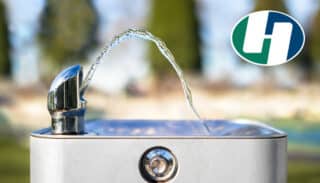Most manufacturers do a great job at mitigating hazards and risks from the work environment, but what happens when the seasons change? OSHA has issued more than 2,500 citations from October 2012 to September 2013 due to manufacturing plants having potential hazards due to the change in season, particularly during winter.
Below are various ways to “winterize” your plant to ensure the elimination of potential for OSHA fines and, more importantly, to provide a safe work environment for your employees.
1. Appropriately equipped company vehicles
Ensure company vehicles are equipped with the proper safety equipment. Examples of these are having snow tires, having chains available when needed, and replacing windshield wipers on a regular basis.
2. Slick floors: slips and falls
When employees enter the plant from outside, they may track in ice, snow or mud that could turn into a trip hazard. In addition, loading docks are primarily located outside of the building and are exposed to the harsh weather but are still considered a part of the plant. Be sure to have absorbent mats at every entrance. Use ice melt salt or blast heaters on sidewalks and loading docks.
3. Proper communication during hazardous weather
Specifically if a plant manager or president has made the decision to close the plant, management should let employees know about the closure through mass emails, text messages, or phone calls early enough so employees are not already on their way to work. This holds true for mass transportation shut downs or if driving conditions become too hazardous during the workday for workers to attempt to journey home.
4. Prevent electrical shock
Melting snow from shoes and boots create standing pools of water that can be a shock hazard for improperly grounded equipment or for employees plugging in hand tools, lights, space heaters, or other devices. Make sure that your maintenance team is on the lookout for standing water and educate employees about the hazards of electricity and water.
5. Mitigate contamination
Workers can track all types of contaminants into the building via their shoes and boots whether it is ice melt salts or sand. This is especially problematic if you manufacture food products or any other type of product that these could contaminate. Keep factory areas clean by sweeping frequently or cleaning floors more often, and provide shoe covers if your product needs to be very sanitary or unpolluted.
6. Machine safeguards
In winter, people tend to wear long sleeves and to dress in layers of bulkier clothing. Bulky clothing may make it harder to operate equipment–it can easily catch on handles, switches, or levers–so it’s important to ensure you have proper safeguards on every piece of machinery.
Manufacturing can be hazardous at the best of times, but winter has special challenges. Watch for these areas of concern and your plant safety record will be intact come spring.
[via OH&S]





